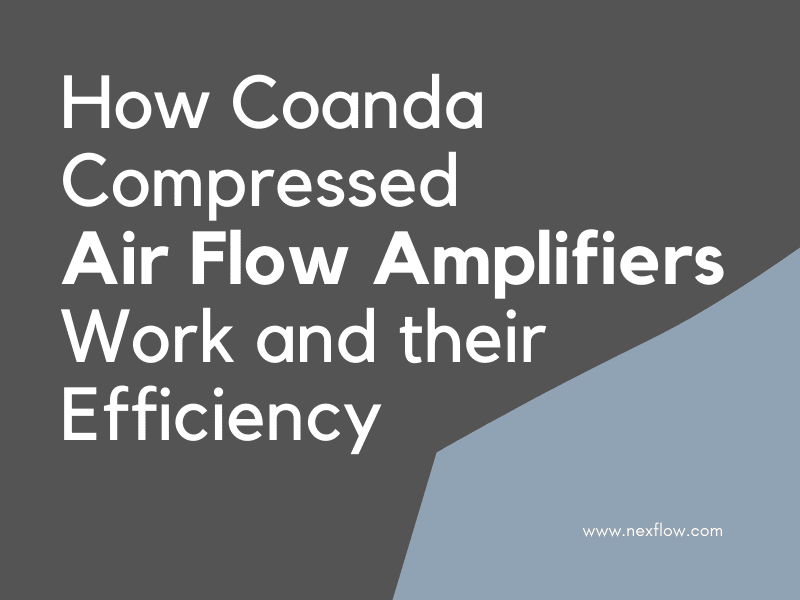
Coanda Compressed Air Flow Amplifiers Explained
This is an update of an older Blog from 2017 expanding on the use of Air Flow Amplifiers.
Air Flow Amplifiers are used for blow off, cooling, and drying but also used for venting applications.
A compressed air flow amplifier works by entraining air along with compressed air. This is accomplished using an aerodynamic effect called the Coanda effect. In this case the fluid (air) follows specific profile angles – like an airplane wing. Just as the Coanda angles on an airplane wing cause the airplane to lift up, in an airflow amplifier the force is directed outward to cool or dry a surface.
The compressed air is mixed with ambient air drawn into the amplifier piece. Two things happen when this occurs. First the velocity of the compressed air slows down as it is mixed with the ambient air. The second thing is that the “mixed air” now has a higher flow and force. So such devices actually can reduce the amount of compressed required for blow off and cooling applications because of the relative increase in mass flow. The process actually converts energy that would be normally lost is pressure drop and noise into flow and the efficiency depends on the Coanda “angles” and other internal modifications to minimize energy loss.
When you get a result you have a certain “amplification ratio” – the ration of output air to compressed air input. This ration will vary with pressure and ambient and compressed air conditions but an average can be obtained. The larger the air amplifier physically the higher the amplification ratio as well. There is a limit to practical amplification of about 15 or 16 to 1 at the exit of the amplifier. This is because, as you increase the amplification (higher entrained ambient air) the velocity slows down weakening the force and velocity. If the amplification is too high the velocity and force become too low to be of practical use. So a balance has to be made. If anyone claims very high amplification ratios be vary of either performance or inflated data. Other things that effect efficiency is internal design and even shim design. Shims are usually used to maintain the gap where the compressed air comes out. If the shim has varying edges blocking flow such as a saw tooth design, you may get increased pressure drop and lower performance. A flat shim or smooth machined gap is typically more efficient. But for compressed air blow off and cooling air flow amplifiers are a great energy saver over compressed air alone, and also a tremendous noise reducer. Properly designed, noise levels can be reduced by 6 dBA or more using such products over pure compressed air blow off.
As mentioned ate the beginning the article, Air Flow Amplifiers are used for blowing, drying and cooling but also for venting as the ambient air is drawn in through the back of the unit. Two major applications are cooling and venting.
Other versions of air amplification like air knives and nozzles can be used for cooling of course but the high amplification ration of Air Flow Amplifiers make them particularly efficient for cooling. The high velocity in combination with the high air entrainments creates an excellent cooling effect superior to that which can be produced by fans. Fans may use less energy but for high valued products that require cooling, any increased energy usage if often offset by faster production speed and output. Also, the Amplifiers can go instant on and off as needed for cooling keeping compressed air cost low.
Venting is another application which is popular especially when portability is important. Welding applications is one example. Air Amplifiers, as stated, can move a lot of air – hence they are often called “Air Movers” so venting is one ideal application, especially if the venting requirement is intermittent since on-off control can be utilized with compressed air. These units can also be used for boosting vented applications if the existing fan system is weak die to excess pressure drops.
Air Amplifiers, when properly understood and utilized can be an efficient method for cooling and venting as well as for blow off applications.





